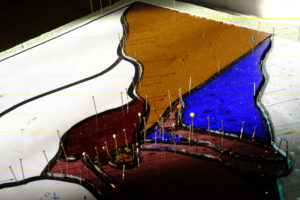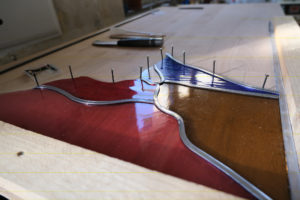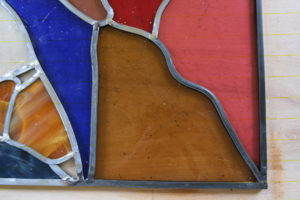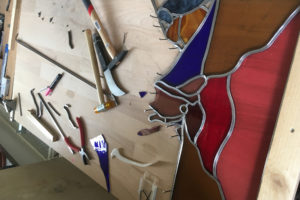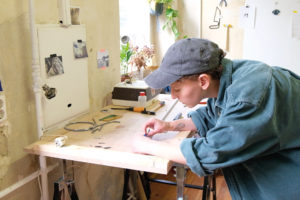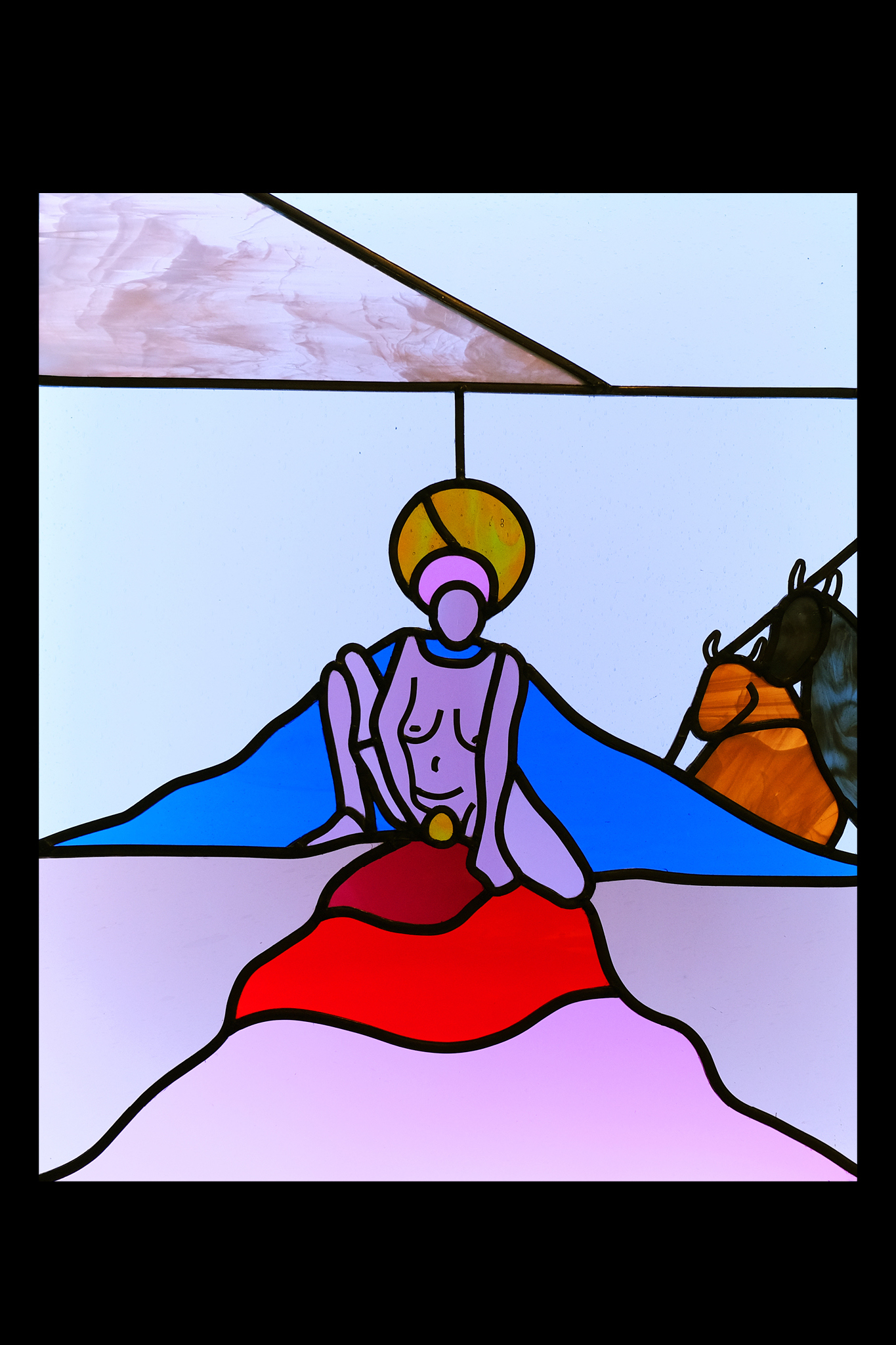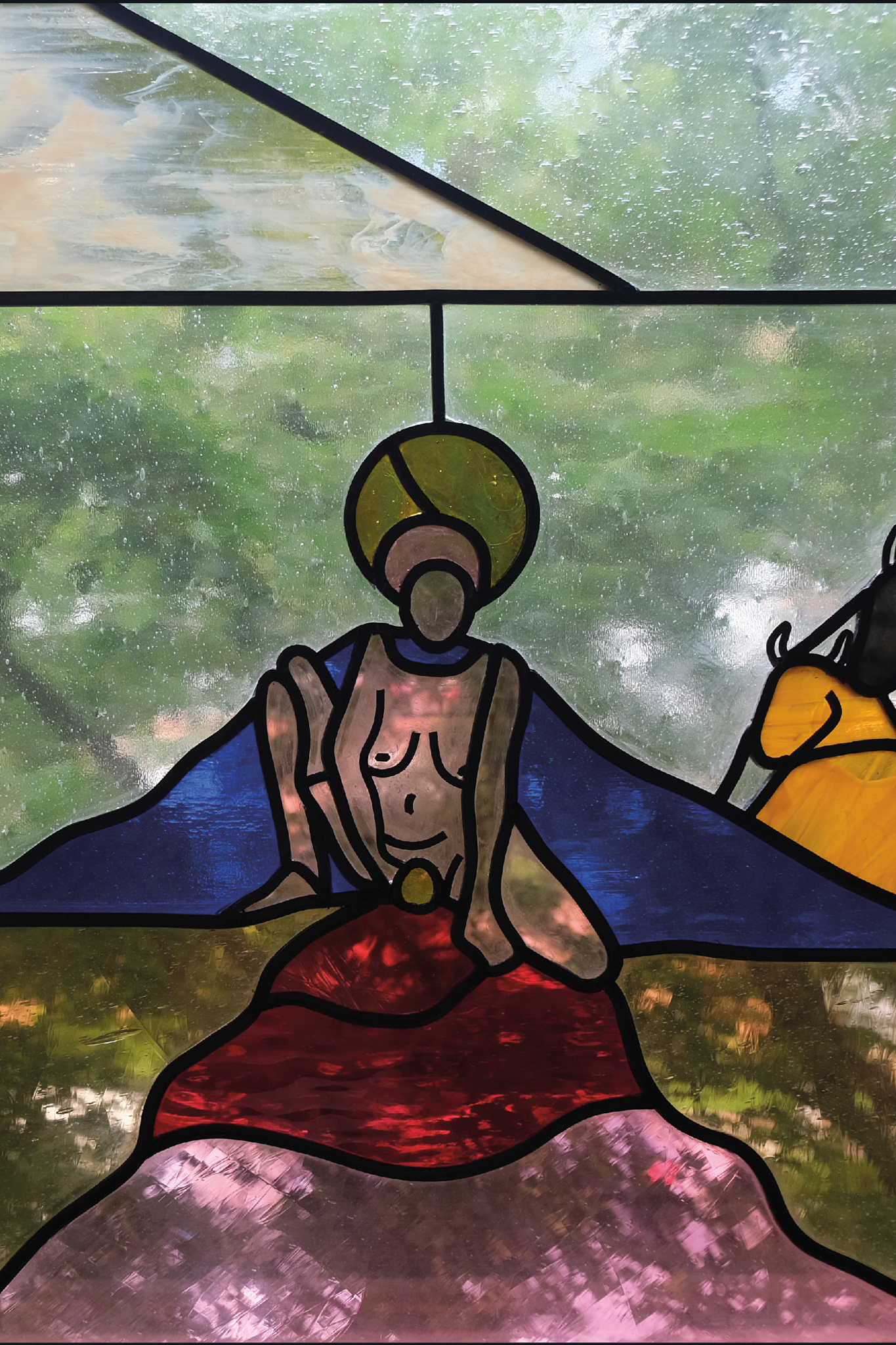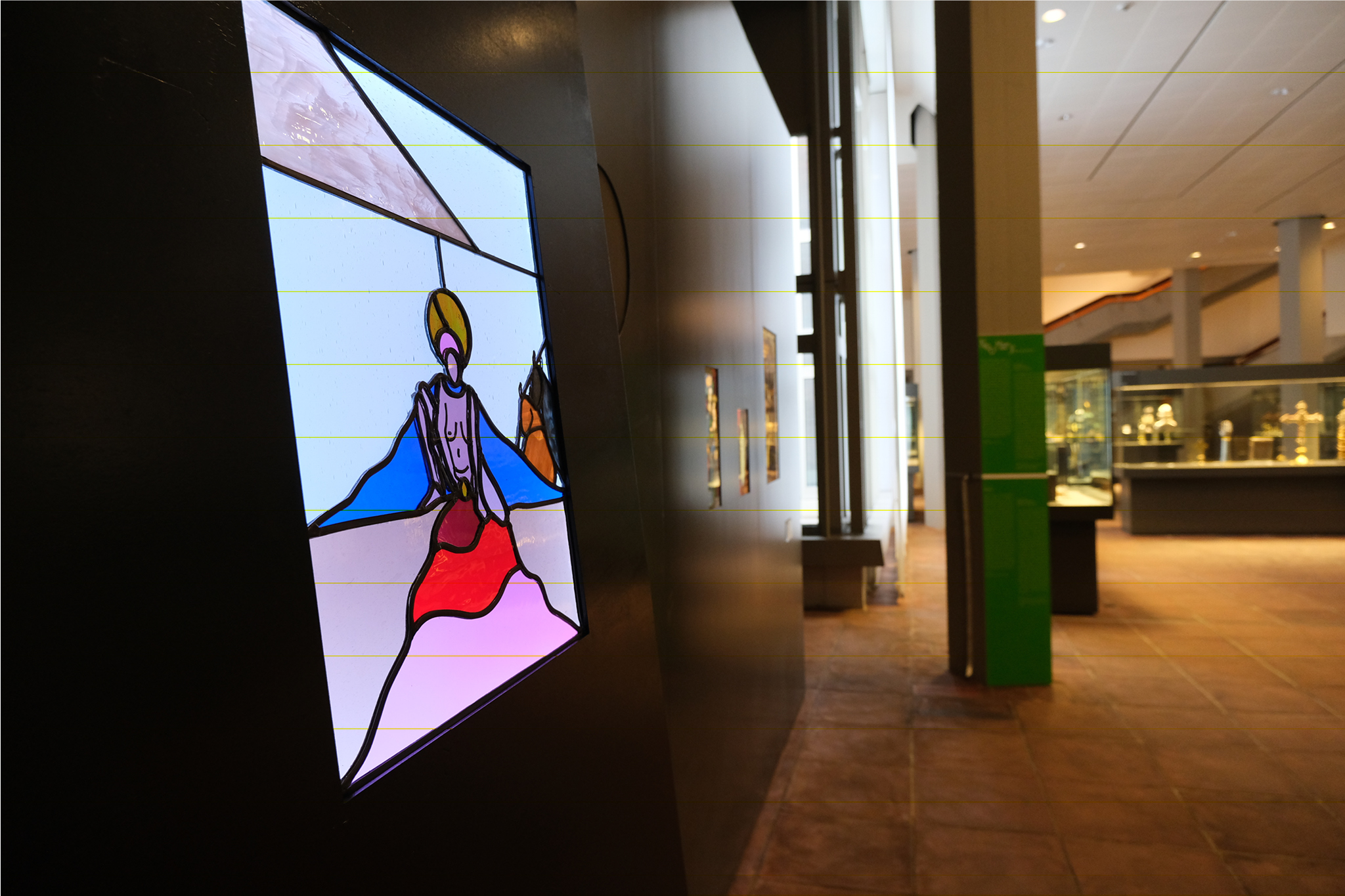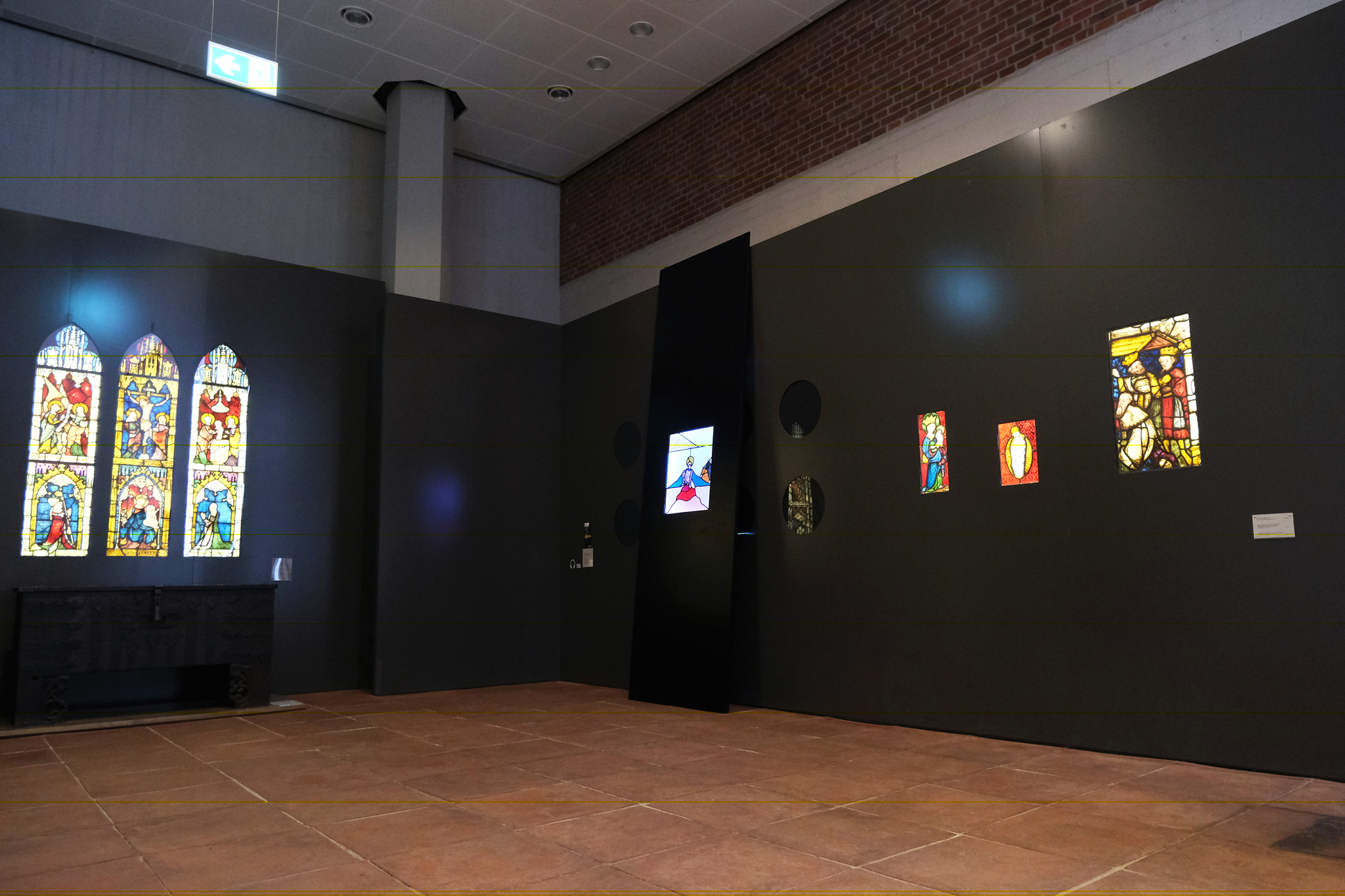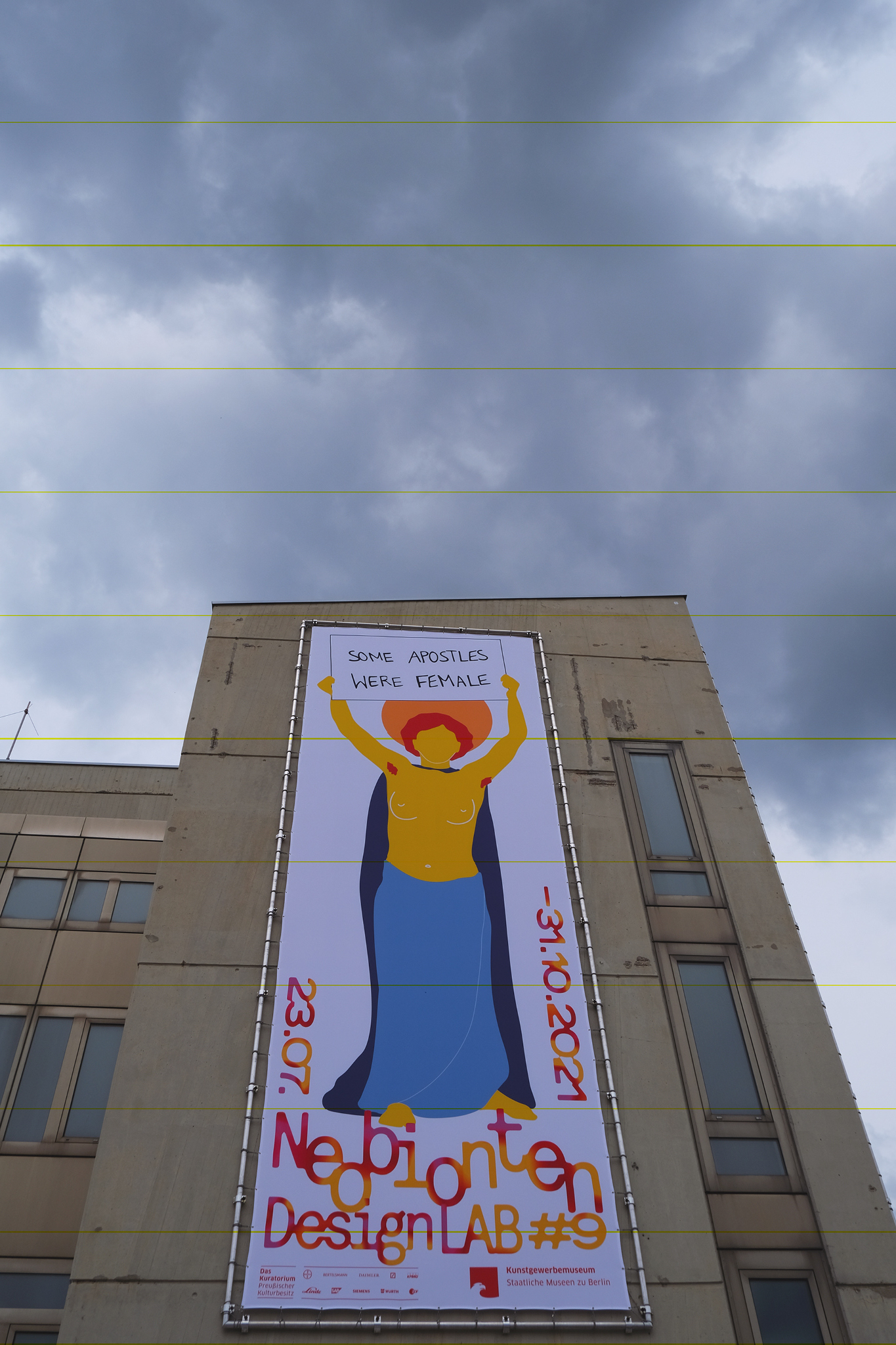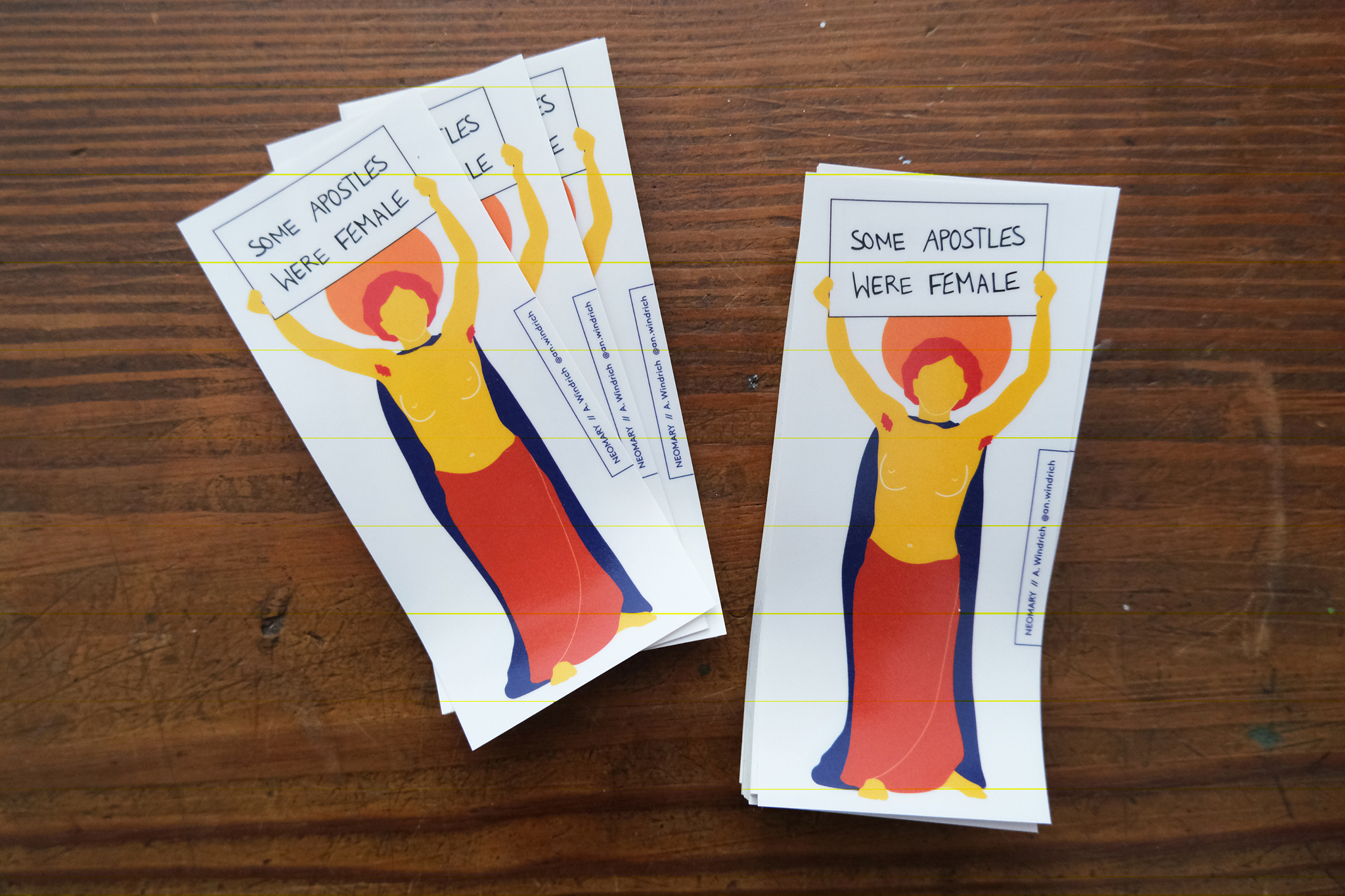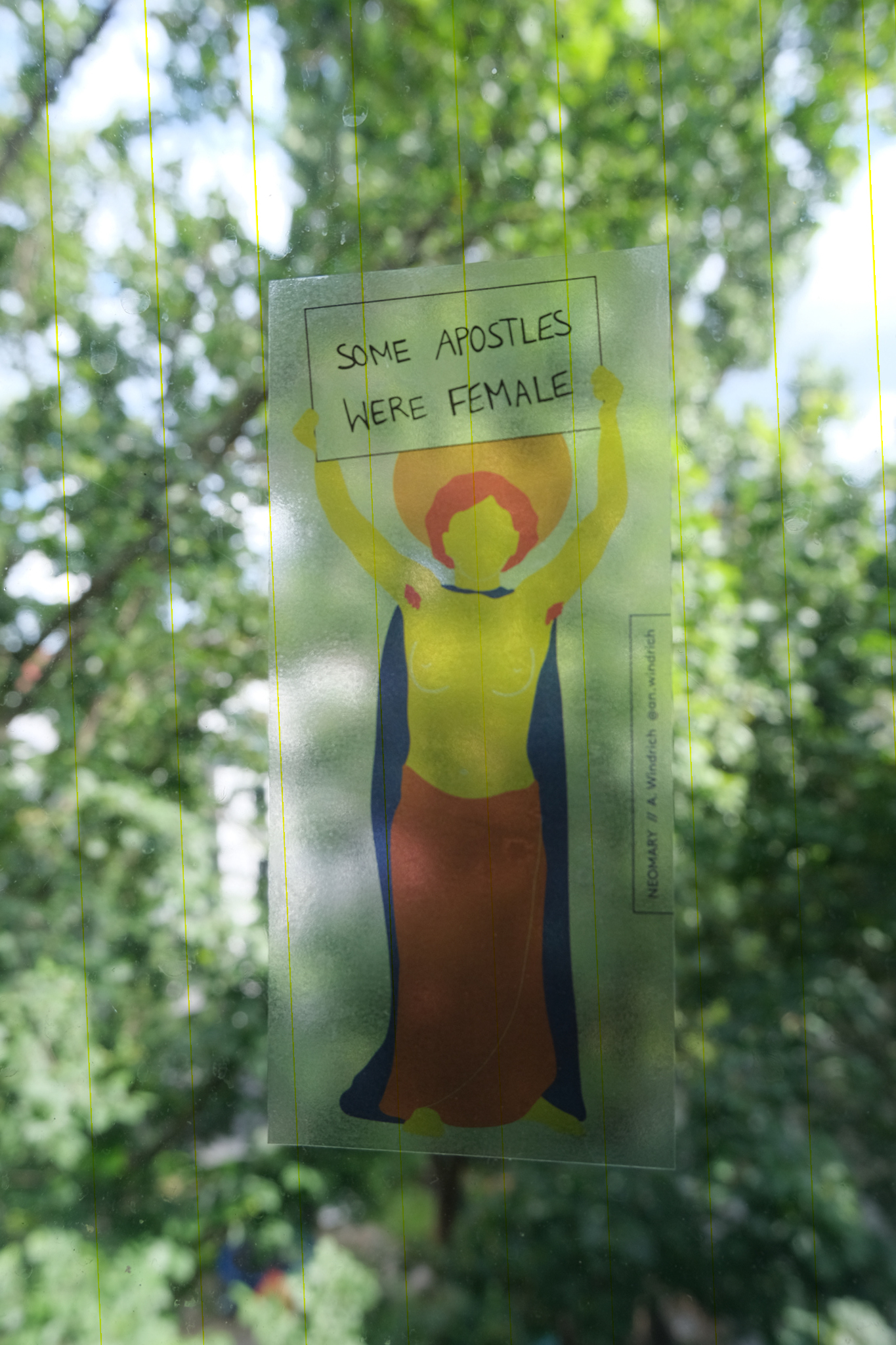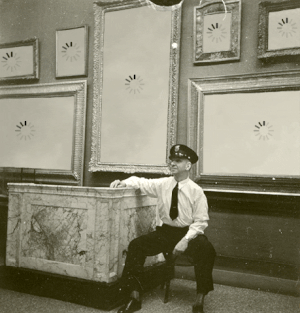NEO MARY Reframing Women in Christianity
Maria, die am häufigsten dargestellte biblische Frauenfigur, wird als devote, schweigsame Persönlichkeit repräsentiert. Dieses Bild hat sich gesellschaftlich manifestiert und reproduziert. Daran lässt sich erkennen, dass Darstellungsformen Teil eines Gesamtgesellschaftlichen Diskurses sind, welcher zur jeweiligen Zeit reguliert, was sagbar und zeigbar ist, der jedoch auch immer beweglich und durch Interventionen veränderbar ist.
Das Projekt NEO MARY regt dazu an, die gewohnten christlichen Darstellungen in Frage zu stellen und einseitige sowie männlich dominierte Repräsentationen aufzuzeigen und zu kritisieren. Ziel ist es, den Repräsentationskreislauf der demütigen, stillen und gefügigen Frau zu durchbrechen und Maria Raum für eine neue und zeitgemäße Stimme zu geben.
Das Glasbild „Neo Mary“ ist eine Neuinterpretation des im KGM Berlin ausgestellten Glasgemäldes „Geburt Christi“ von Peter Hemmel. Wie das Original, zeigt „NeoMary“ Maria im blauen Marienmantel in der bekannten Stallszenerie mit Ochse und Esel, nimmt den Titel jedoch wörtlich. Erhobenen Hauptes blickt die Gebärende die betrachtende Person an und beherrscht den Raum. Die klassische Darstellung Marias als devote und schweigsame Person wird überwunden, die Fremdbestimmung abgelegt. Hemmels Werk stammt aus einer Zeit in der das Christentum in vielen Kulturkreisen sinnstiftend war und die Lebenswelten stark beeinflusste. Auch wenn in weiten Teilen die Institution Kirche an Bedeutung eingebüßt hat, ist auch 540 Jahre später noch die westliche Kultur und Gesellschaft stark von christlichen Traditionen und Denkweisen bestimmt. In den modernen Familien- und Rollenbildern werden christliche Werte und Subjektivierungsweisen fortgeschrieben, verschiedene Formen der Diskriminierung werden religiös legitimiert und nicht zuletzt wird der Akt der Geburt nach wie vor tabuisiert. Das Glasbild im Format 48 x 58 cm besteht aus insgesamt 36 transparenten Buntglasstücken, die in Bleiruten gefasst sind.
Mary, the most frequently portrayed biblical female figure, is represented as a submissive, silent personality. This image has manifested and reproduced itself socially. This shows that forms of representation are part of an overall social discourse, which at the time regulates what can be said and shown, but which is also always flexible and changeable through interventions.
The project of ”NEO MARY“ encourages to question the usual Christian representations and to point out and criticize one-sided as well as male-dominated representations. The aim is to break the cycle of representation of the humble, quiet and submissive woman and to give Maria space for a new and contemporary voice.
The glass picture „Neo Mary“ is a reinterpretation of the stained glass „Birth of Christ“ by Peter Hemmel exhibited at KGM Berlin. Alike the original, the ”NeoMary” depicts Mary in a blue virgin mary cope in the infamous nativity scene with ox and donkey, but interprets the title literally. With her head held high, the birthing mother is observing the viewer and dominates the room. The classical depiction of Virgin Mary as a devoted and taciturn person is being overcome, the heteronomy discarded. Hemmels artwork stems from a time when Christianity had a great influence and heavily affected the living environment. Even though the institutionalized church has mostly lost its meaning, 540 years later the Western culture and society is still heavily shaped by Chritian traditions and concepts. Within the modern view on family and gender, Christian values and modes of subjectivation are being continued, different forms of discriminations are being legitimated by religion and last but not least the occurence of birth is still kept taboo. The 48 by 58 cm glass picture consists of 36 transparent coloured glass pieces, which are girthed by lead camings.
Prozess
